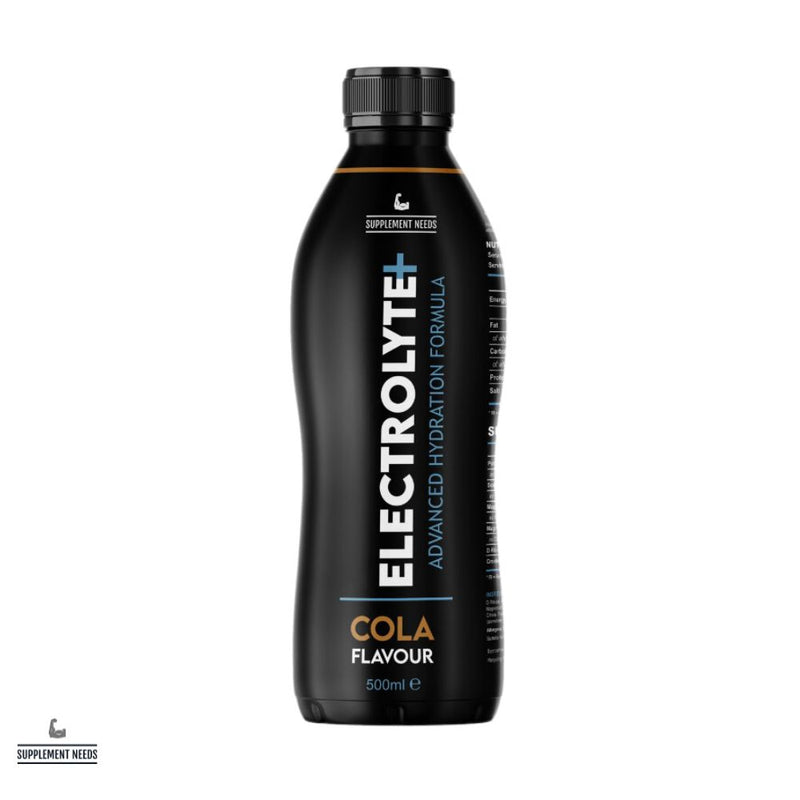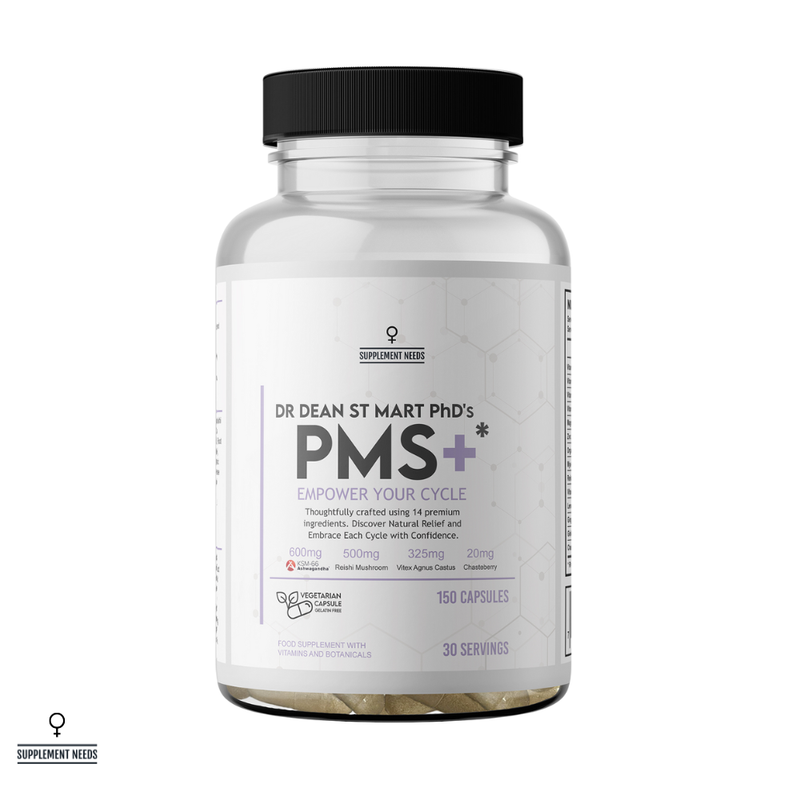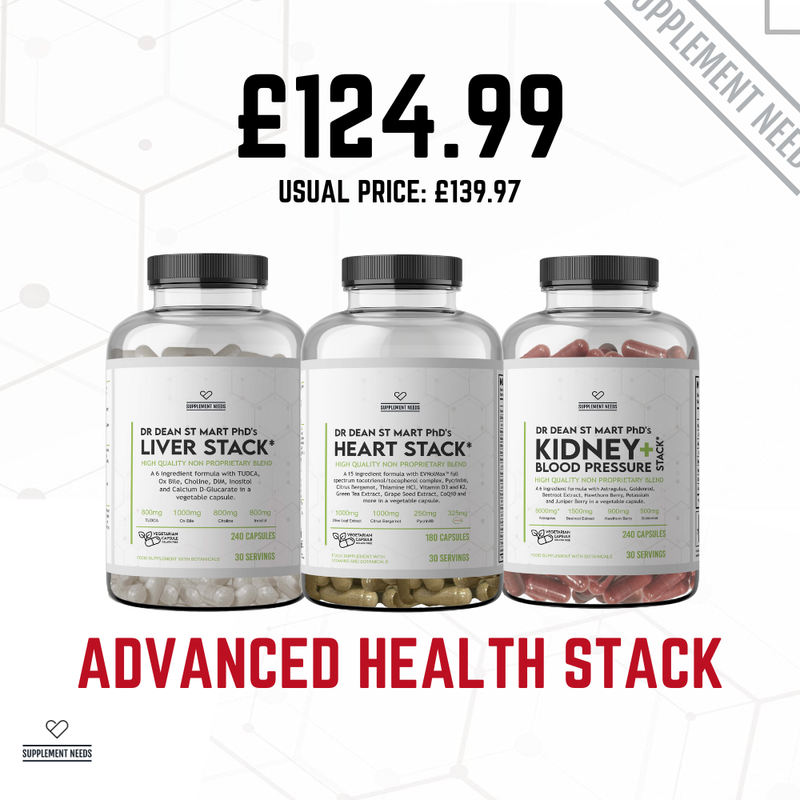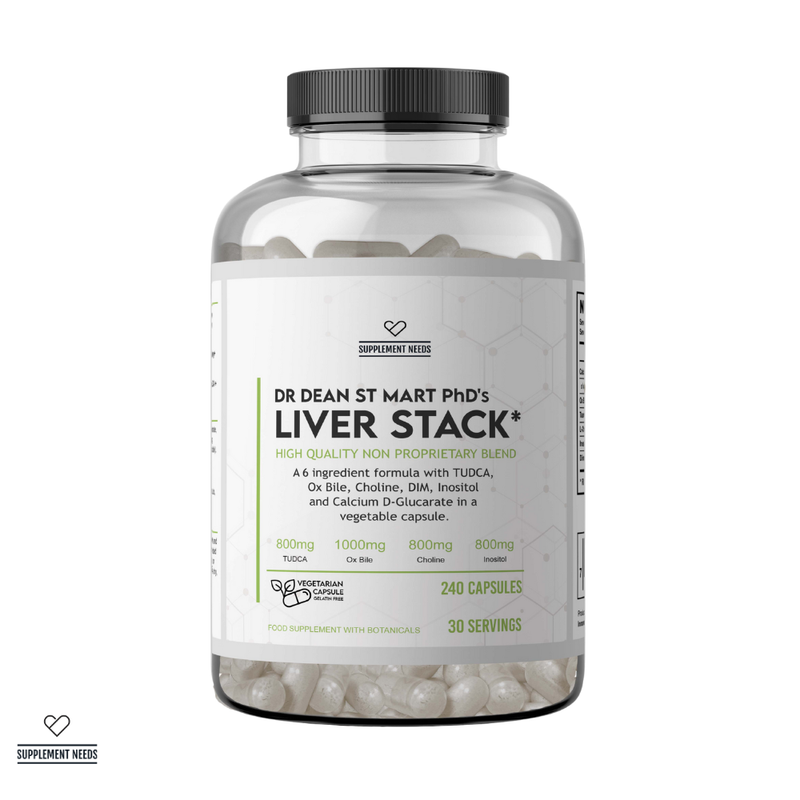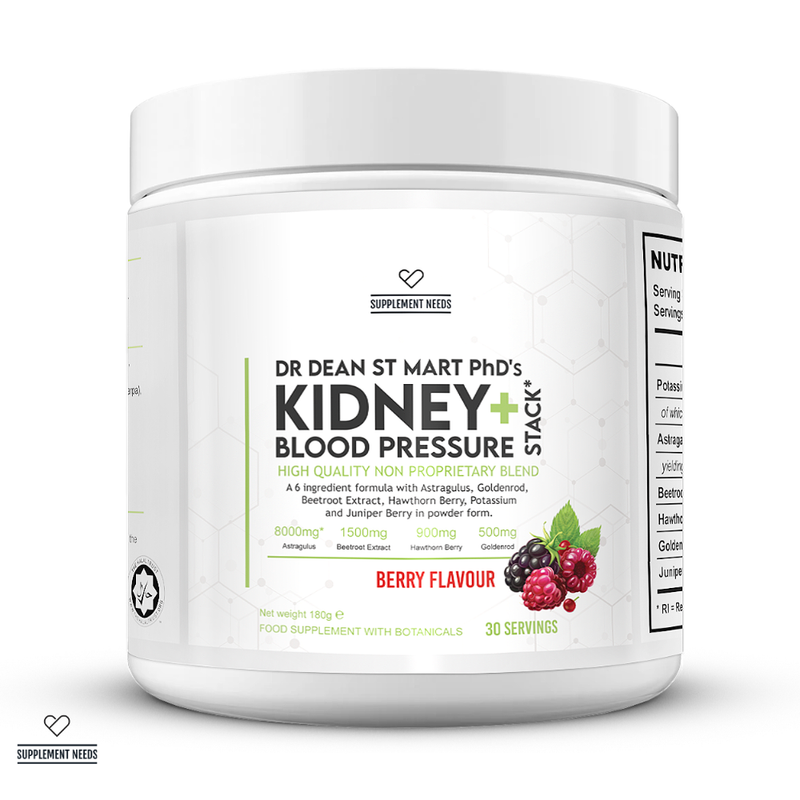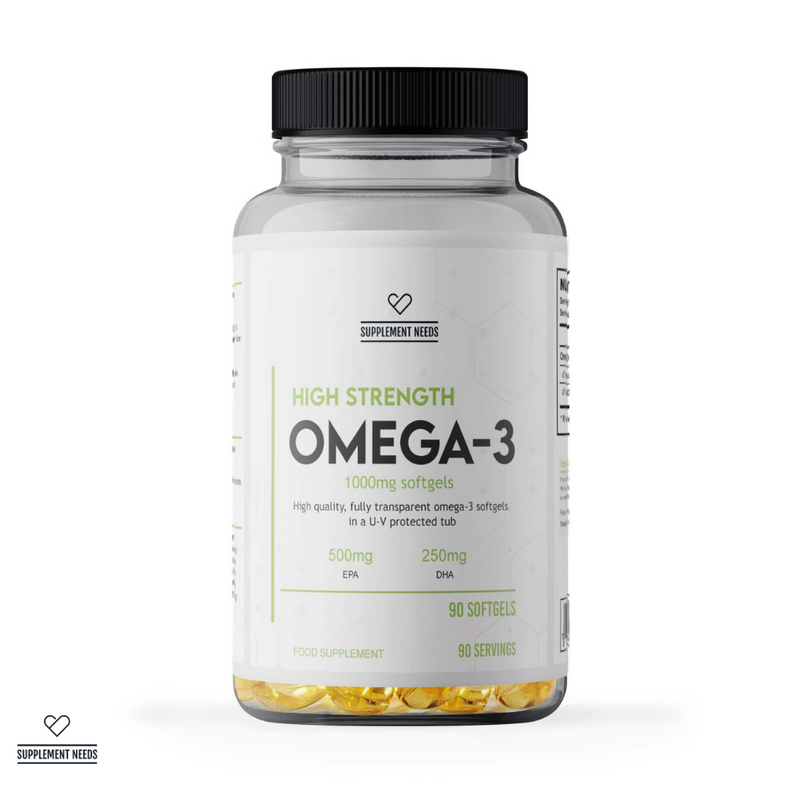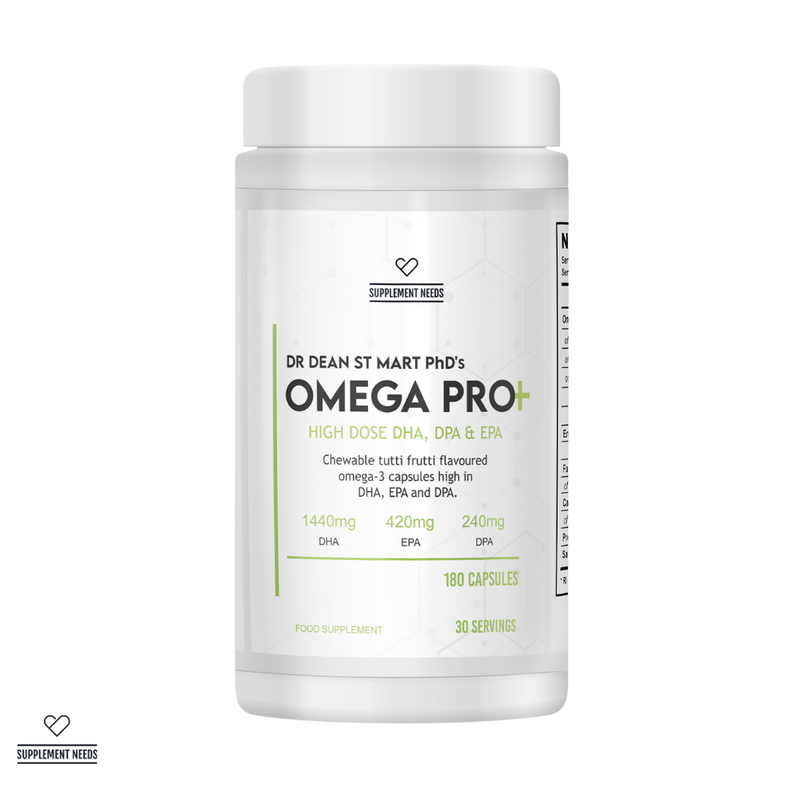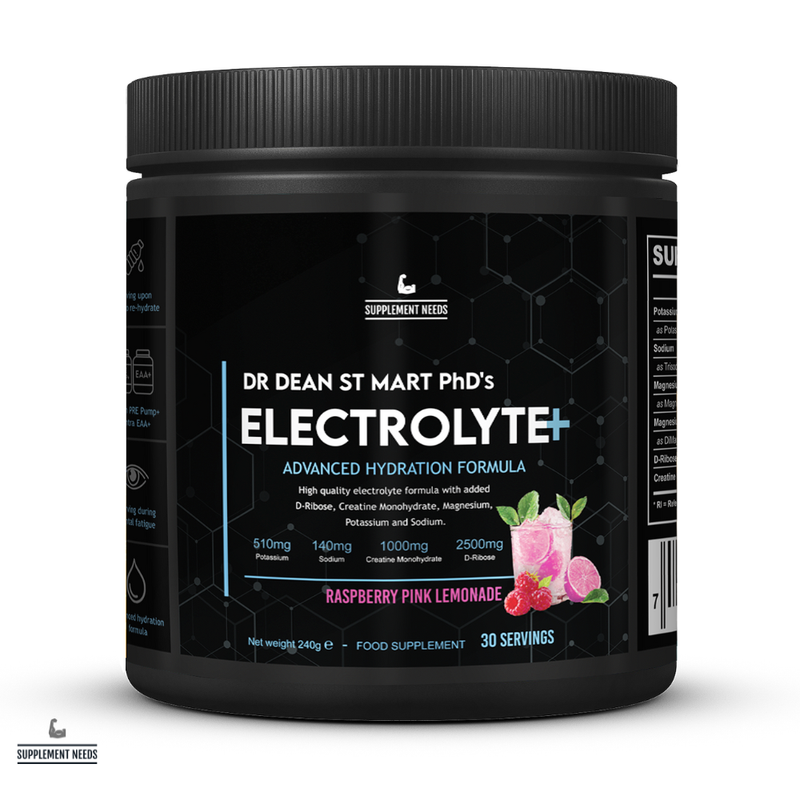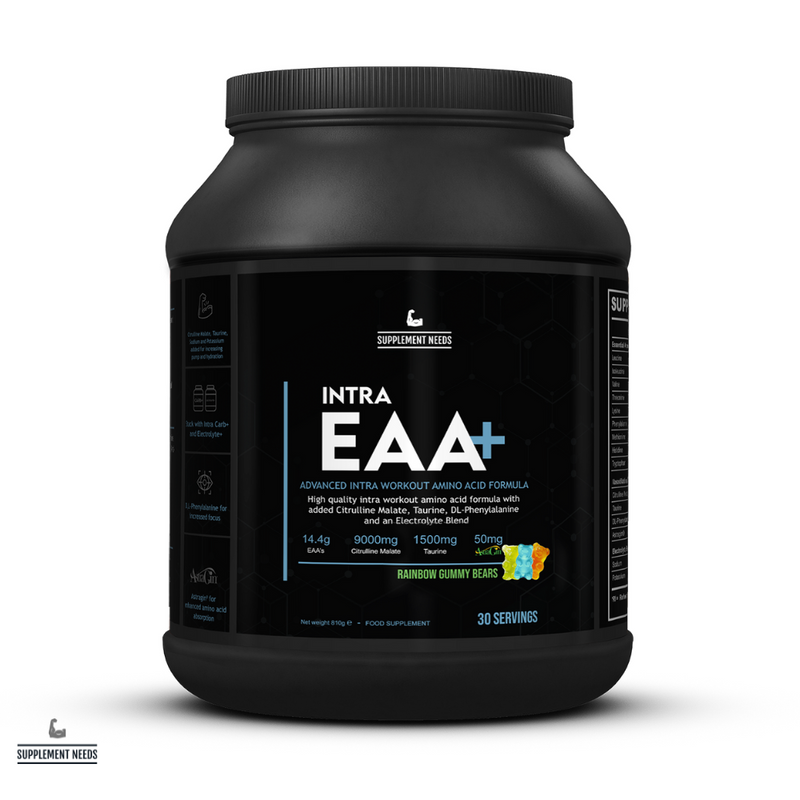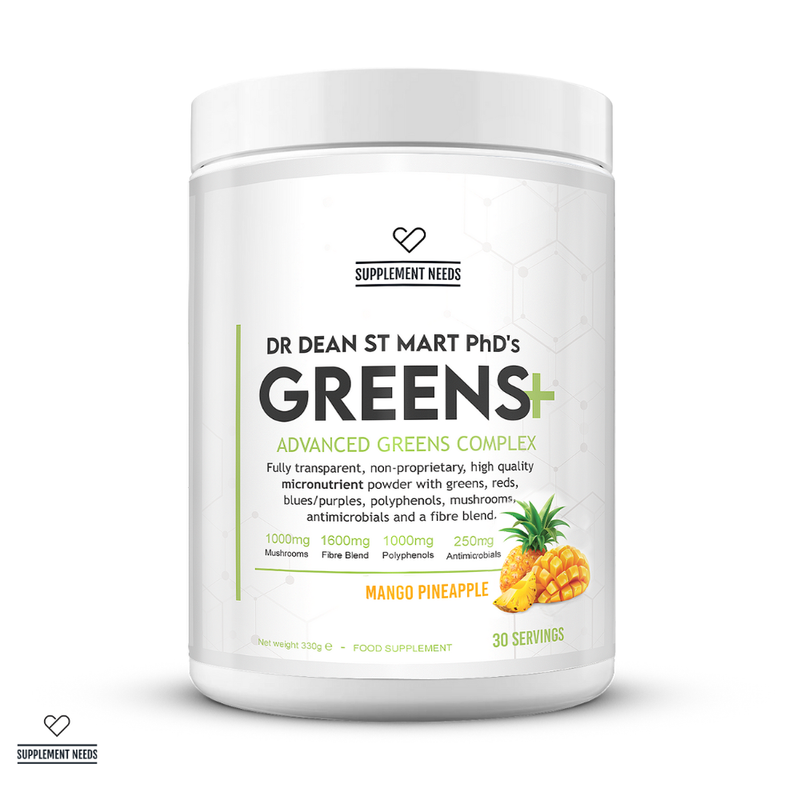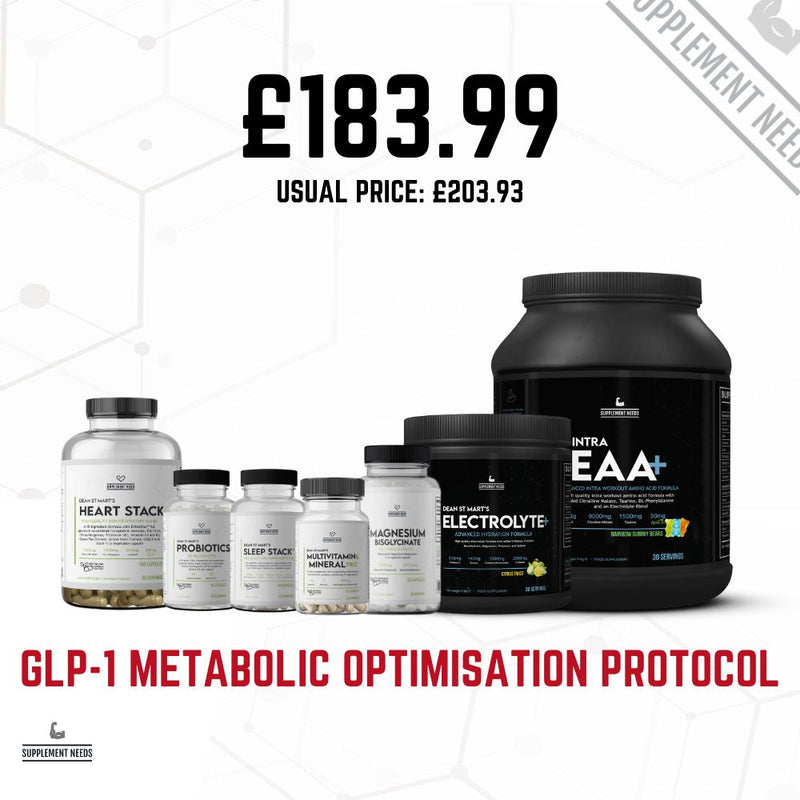If you’ve been looking into vegan-friendly, lactose-free alternatives to whey protein, then you may have heard that “it’s impossible to buy complete protein powders”. But, is that really the case? The Supplement Needs team investigates…
Protein powders: what are they?
Before we can truly delve into the ins and outs of protein powders (and their plant-based alternatives), let’s first define what is meant by the term ‘protein powder’.
So, what is a protein powder?
Like many supplements on the market, there isn’t a hard and fast legal or scientific definition as to what a protein powder is, meaning protein powders aren’t ‘regulated in the same way as food or medicine’1. However, it’s generally accepted that a protein powder is a powdered form of protein that is mixed with a liquid such as water or milk and consumed orally (although some people also add protein powder to baked goods or savoury foodstuffs, too).
Why do people take protein powders?
There’s a bit of an urban myth that only hardcore bodybuilders need to use protein powders. However, the reality is that a broad range of people - especially those who engage in regular physical activity can potentially benefit from supplementing their diet with additional protein.
According to the British Nutrition Foundation, the Reference Nutrition Intake (RNI) for protein for adults is 0.75g protein per kg of bodyweight, per day2. This equates to 56g/day for men and 45g/day for women of average body weights (75kg and 60 kg respectively).
It’s possible to source this level of protein from a standard healthy diet. In fact, according to the National Diet and Nutrition Survey3, the biggest sources of protein intakes in the UK include meat and meat products (34%), cereals and cereal products (24%), and milk and milk products (13%).
However, for those who are seeking to develop their body, a growing body of evidence4 suggests that the supplementation of protein can be beneficial to this end. As one systematic review and meta analysis5 found:
“Data from 49 studies with 1863 participants showed that dietary protein supplementation significantly (all p<0.05) increased changes (means (95% CI)) in: strength - one-repetition-maximum (2.49kg (0.64, 4.33)), FFM (0.30kg (0.09, 0.52)) and muscle size - muscle fibre cross-sectional area (CSA; 310 µm² (51,570)) and mid-femur CSA (7.2 mm² (0.20, 14.30)) during periods of prolonged RET”.
To put this into simpler language; the supplementation of protein can potentially lead to gains in muscle mass and strength.
But, why protein? After all, your diet contains a series of other micro and macro nutrients.
Proteins are large macromolecules that are made up of one or more long chains of amino acids that are linked together by peptide bonds (remember this piece of info for later, as it represents the crucial point of this article!).
Proteins perform a vast array of functions within an organism (such as the human body) and participate in nearly every cellular process. Important functions performed by proteins include catalysing metabolic reactions (i.e. kick-starting chemical reactions within the body), DNA replication, providing structure to cells and more.
Scientists tend to agree that there are around 20,000 proteins in the human body6, (although some studies suggest this number could be even higher7). Whilst that’s a huge number, there is a certain group of proteins that contribute towards muscle development. These proteins can be (somewhat crudely) labelled ‘contractile myofibrillar proteins’ (e.g. myosin, actin, tropomyosin etc) and mitochondrial proteins8.
Of these proteins, the ones that are most important to muscle fibre structure are actin and myosin9.
It’s these proteins that primarily contribute to something called muscle protein synthesis (MPS).
Muscle protein synthesis is defined as ‘the driving force behind adaptive responses to exercise and represents a widely adopted proxy for gauging chronic efficacy of acute interventions (i.e. exercise/nutrition)10’.
That’s a technical way of saying that muscle protein synthesis is what causes your muscles to grow and develop following exercise.
To sum up this section so far, proteins - of all the macronutrients within your diet - are integral to muscle development. It’s for this reason that many people, especially those that are very physically active, tend to supplement their diet with protein powders.
The rise of plant protein powders
You only have to walk down a supermarket aisle or have a cursory browse of the web to see that protein powders have exploded in popularity.
Whereas in the past protein powders would primarily be consumed by those looking to build and/or maintain muscle mass (such as bodybuilders), protein powders are these days consumed by a much broader range of people.
The thing is, protein powders aren’t necessarily suitable for everyone.
Why?
Because of how many protein powders are designed and manufactured.
Let us explain…
Many protein powders on the market take the form of ‘whey protein’.
Whey protein is derived from cow’s milk as a by-product of cheese manufacturing, with the process generally being as follows:
-
Cows are milked at a dairy farm, with the resulting raw unpasteurised milk being chilled to about 4ºC before then being transported to a cheese making facility.
-
Once at the facility, the milk is then pasteurised. This pasteurisation process kills any microbes, yeasts and moulds that may be present in the milk.
-
Following pasteurisation, a culture (or cultures) is added to the milk. The addition of this culture ‘kick-starts’ the fermentation process, slightly acidifying the milk.
-
The next step will see rennet added to the milk (rennet being a complex set of enzymes that are produced in the stomachs of ruminant animals). The rennet causes the milk to curdle, creating curds and whey (yes, as in the nursery rhyme!).
-
The curds and whey are then separated in a process known as ‘cutting the curd’. It’s the whey that is used in the creation of whey protein powders. At this point it is drained away, whilst the curds are used to produce cheese.
- A series of steps are then followed whereby the whey is passed through a series of filters (to remove any unwanted fats) before being spray dried. This involves spraying the liquid whey through an atomiser or spray nozzle through heated air. The end result is the whey protein powder you put in your shaker bottle.
Note - there are actually three common types of whey protein; whey protein concentrate, whey protein isolate, and whey protein hydrolysate. The main difference between these types of protein is their compositions (e.g. fat and lactose content) and the degree to which the protein is concentrated.
We appreciate that this is something of a ‘whistle-stop’ tour of how whey protein is made, but it should give you a clue as to why plant-based protein powders have started to become more popular.
Firstly, given that whey protein is derived from cow’s milk, it’s not suitable for individuals who follow a vegan diet.
Secondly, some people wish to minimise their use of animal-derived products from an environmental point of view. Instead, plant protein is often cited as a more sustainable form of food production11. Furthermore, milk production (from which whey is derived) is responsible for 3.15kg of greenhouse gas emissions per litre of milk produced12.
Thirdly, in some people, the ingestion of whey protein can result in digestive stress. This digestive stress can manifest as bloating, excess gas, stomach cramps and even diarrhoea13.
Digestive stress from whey protein consumption is often as a result of an individual suffering from lactose intolerance (which tends to be the main carbohydrate in whey protein powders). As their body is unable to produce enough of the enzyme lactase (which the body needs in order to digest lactose), the result is the unpleasant and uncomfortable symptoms outlined above.
Lactose intolerance is surprisingly common, too. One source14 suggests that up to 65% of people worldwide suffer from lactose intolerance to one degree or another.
As a result of these points, more and more people are searching for alternatives to whey protein powder - hence the rise of plant-protein based alternatives.
However, as you’ll soon read, it’s not simply a straight swap from one to the other. There are some important things to look for that we’ll cover next…
What to look for in a plant protein powder
Whether you’re looking to swap from whey protein powder for health, ethical or environmental reasons, it’s not as simple as picking up the first plant protein powder you see. If you want a plant protein powder that has an equivalent profile to whey protein, then you need to look for certain characteristics.
Amino acid profile
As we’ve seen, protein can contribute to Muscle Protein Synthesis (MPS) and concomitant muscle growth and development.
The thing is, if you want a truly efficacious protein powder (especially if it’s a plant-based protein powder), then you’ll need to pay close attention to amino acids.
Why?
If you’ll remember earlier in this article, we asked you to remember that proteins are made up of long chains of amino acids that are linked together by peptide bonds.
Amino acids effectively act as the ‘building blocks’ of proteins. They are also required for the synthesis of other important compounds such as creatine, peptide hormones, and certain neurotransmitters15.
So far, so good. However, these amino acids aren’t a single homogenous group. Instead, they can be roughly grouped into three types:
- Essential amino acids - which cannot be synthesised endogenously (within the body) and must be obtained from foodstuffs or supplements.
- Non-essential amino acids - which can be synthesised endogenously (e.g. ‘made’ within the body).
- Conditional amino acids - these are amino acids that are normally non-essential (e.g. made within the body), except in certain situations such as when the body is under intense stress or illness.
Note - this is a somewhat crude categorisation of amino acids. Amino acids can also be categorised based on their variable ‘R’ group (an atom or group of atoms bonded to the central atom). Based on this categorisation, amino acids can be segmented as; Polar Amino Acids, Nonpolar Amino Acids, Polar Basic Amino Acids, and Polar Acidic Amino Acids. For the sake of simplicity and readability, we’ll be referring to essential, non-essential and conditional amino acids for the remainder of this article.
Essential amino acids
As you’ve just read, essential amino acids have to be obtained from foodstuffs and are particularly prevalent in meats and meat products such as beef, fish, and poultry. They are also found in eggs, dairy, soy, quinoa, and buckwheat. When you’re looking at the amino acid profile of a plant-protein powder, it’s essential amino acids you should be looking for.
There are a total of 9 essential amino acids. These are as follows:
- Histidine - your body uses Histidine to produce histamine. Histamine is a neurotransmitter that contributes to immune response, digestion, sexual-function, sleep and more16.
- Isoleucine* - this amino acid is heavily involved in muscle metabolism and is concentrated in muscle tissue. It also contributes to energy production and immune function17.
- Leucine* - Leucine is another amino acid that plays an important role in protein synthesis and muscle development and repair. It also helps to produce growth hormones and contributes to wound healing18.
- Lysine - this amino acid plays a significant role in protein synthesis, calcium absorption and the production of enzymes and hormones. Lysine also contributes to energy production and collagen and elastin production19.
- Methionine - playing an important role in metabolism and detoxification is methionine. It also contributes to tissue growth and the absorption of important minerals such as Selenium and Zinc20.
- Phenylalanine - Phenylalanine is converted by your body into tyrosine, dopamine, epinephrine, and norepinephrine. These are important neurotransmitters. Phenylalanine also plays a role in the structure and function of proteins and enzymes21.
- Threonine - this amino acid contributes to proper fat metabolism and immune function. It’s also an important building block in structural proteins such as collagen and elastin - which make up your connective tissue and skin22.
- Tryptophan - Tryptophan is a precursor to serotonin, an important neurotransmitter that regulates your sleep, mood and appetite23.
- Valine* - this is one of the important amino acids for muscle growth and regeneration. It’s also involved in energy production24.
These are the essential amino acids that you need to source from outside your body. However, the sharp-eyed amongst you will hopefully have spotted that three of these essential amino acids have a star (*) next to them; Isoleucine, Leucine, and Valine.
These are the three branched-chain amino acids (BCAAs) amongst the essential amino acids.
Multiple studies indicate that these branched-chain amino acids have particular muscle developing qualities. These include:
Increasing muscle growth
One study25 found that the BCAA Leucine activates a pathway in the body that stimulates Muscle Protein Synthesis (MPS), therefore developing muscle. The “Leucine trigger” hypothesis states a minimum of 0.7 to 3g of Leucine is required to spike muscle protein synthesis, so pay attention to the amount of Leucine being ingested from a protein source2627.
Another study28 found that people who consumed a drink with 5.6g of BCAAs after a period of resistance training had a 22% greater increase in Muscle Protein Synthesis compared to a group of people who consumed a placebo drink.
It’s important to note, however, that studies29 have found that BCAAs require the presence of the other essential amino acids in order to maximise Muscle Protein Synthesis; which is why a complete protein source is preferred.
Reduced muscle soreness
Another potential benefit associated with the supplementation of BCAAs is reduced muscle soreness.
As one 2010 study30 found, people who supplemented with BCAAs before a squat exercise experienced reduced delayed onset muscle soreness (DOMS) compared to a control group.
Reduced fatigue
It is speculated that BCAAs can help reduce fatigue following exercise. Two studies3132 have added credence to this view. The studies saw participants supplement BCAAs. Following exercise, they reported a reduction in central fatigue and improved athletic performance.
Prevention of muscle wastage
A number of studies33 have indicated that supplementing the diet with BCAAs can ‘inhibit muscle protein breakdown’. As a result, the supplementation of BCAAs can have potentially beneficial effects for certain population groups34.
The key point:
As you can see, BCAAs have a number of potential benefits - so, it’s vital that if you want to buy the very best plant-protein powder that you buy one that is complete.
What we mean by ‘complete’ is that it contains every one of the essential amino acids - especially the branched-chain amino acids Isoleucine, Leucine, and Valine.
However, as you’re likely to find, BCAAs are most abundantly and easily available from animal sources. As such, you’ll often find that plant-protein powders do not include a “complete” amount of BCAAs required for protein synthesis, especially Leucine
This isn’t to say that complete plant protein supplements don’t exist (soybeans and pea proteins contain all the essential amino acids, for example), but you should carefully check the nutritional information of any plant-protein powders!
If you buy a plant-protein powder that isn’t complete - you won’t be getting a product that offers the same muscle building benefits of whey protein!
Vegan ISO+ has been carefully designed with the addition of a full spectrum of essential amino acids to match the complete amino acid profile of dairy whey.
Contains a digestive enzyme
So, aside from checking the amino acid profile of your chosen plant protein powder, what else should you look for?
We’d argue that a good quality plant protein powder should always contain an added digestive enzyme.
Why?
Because, plant-based proteins can be somewhat more difficult for your body to digest than animal-based proteins>sup>35. Whilst figures vary, it has been estimated that plant proteins have a digestibility of about 70 to 90%, whereas animal proteins can have a digestibility of 97%.
With that in mind, here at Supplement Needs, our own plant-based protein supplement, Vegan ISO+, has been formulated to maximise digestibility and prevent bloating.
We have achieved this by including the following ingredients that improve digestibility:
- ProHydrolase® - this is a trademarked, high-quality proteolytic enzyme that encourages pre-digestion of the proteins within Vegan ISO+. This has the benefit of allowing the release of the full content of the essential amino acids.
- Alpha-Galactosidase - this is a digestive enzyme that is added specifically to minimise bloating associated with the consumption of plant proteins. As studies36 have indicated, Alpha-Galactosidase can have a positive effect on reducing flatulence.
- AstraGin® - another trademarked, high-quality ingredient, AstraGin® is a plant-based compound that is added to Vegan ISO+ to enhance absorption of the amino acids and maximise digestibility.
Protein volume
Naturally, if you’re going to be investing in a plant-protein supplement, you’re going to want to get the most value for your money.
So, it pays (literally!) to check the volume of protein you’ll actually be getting from any particular supplement.
Supplement Needs’ Vegan ISO+ contains an incredible 65.27% protein per serving. That’s 26.11g of protein per 40g serving!
As we saw at the outset of this article, the British Nutrition Foundation suggests that men of an average body weight require 56g/day of protein. As you can see then, Vegan ISO+ is ideal if you’re ’going for gains’ and need to quickly and easily add extra protein to your diet.
Taste profile
There’s no getting away from the fact that many plant-protein powders on the market have a pretty unpleasant taste profile.
It’s almost as if taste is an afterthought! Chalky, soil-like tastes, with gritty mouth feels seem to be the norm.
But, here at Supplement Needs, we don’t think you should have to sacrifice taste when it comes to plant-protein. Vegan ISO+ has been formulated to include premium and sweet tasting Organic Pumpkin Protein. The result is a vegan protein powder that tastes unlike any other on the market.
Don’t just take our word for it though! Here’s what one review had to say about it:
“Possibly the best protein I’ve ever used. Taste is excellent, great on my digestive system as well. Dr Dean has done it again!”
Furthermore, we have launched Vegan ISO+ in two great flavours; Chocolate Peanut, and Golden Wheaties.
Transparent ingredients
As protein powders aren’t regulated in the same way as medicines or foodstuffs, you should pay particular attention to the ingredients they contain.
This is especially important when you read about the results of a study conducted by the Clean Label Project.
Researchers studied 134 protein powders for 130 types of toxins. The results were startling, with many of the powders containing elevated levels of heavy metals (lead, arsenic, cadmium, and mercury) and bisphenol-A (a chemical used to make plastic).
The researchers attributed these findings to poor manufacturing practices.
Here at Supplement Needs we are not only completely transparent about the ingredients within our supplements, but all of our products are manufactured in line with Good Manufacturing Practices. The Good Manufacturing Practices set out stringent criteria to ensure that products are; of consistent quality, are appropriate for their intended use and meet the product specification.
Backed by credentials
Following on from the above point, you should ensure that your chosen vegan protein powder is not only transparent regarding its ingredients and manufacture but has been formulated by a credentialed expert.
All of Supplement Needs’ products, including Vegan ISO+ have been formulated and designed by Dr. Dean St Mart PhD.
Dean holds a double first class honours degree in chemistry and pharmaceutical chemistry from the National University of Ireland Maynooth (where he finished top of the university). He also holds a PhD in synthetic organic chemistry and fluorescence spectroscopy.
You’ll be hard beat to find a vegan protein powder that’s got better credentials than that behind it!
Buy the very best complete plant protein powder now

If you’re looking for a truly complete plant protein powder, then look no further.
Supplement Needs Vegan ISO+ has been designed and formulated to embody all the features and characteristics you need in a protein powder:
- Nutritionally complete - include BCAAs alongside a complete spectrum of amino acids required for muscle building ✅
- High volume of protein per serving ✅
- Fully transparent ingredients ✅
- A fantastic taste ✅
- Developed by the very best experts ✅
Shop Supplement Needs Vegan ISO+ now
Disclaimer
The information on this website should not be used as a substitute for professional medical advice or care. If you have questions about your health, please contact your doctor.
References
1. Gelsomin E. The scoop on protein powder. Harvard Health Blog. Available at: https://www.health.harvard.edu/blog/the-scoop-on-protein-powder-2020030918986 (Accessed on 4th December 2023).
2. British Nutrition Foundation. The science of protein. Available at: https://www.nutrition.org.uk/healthy-sustainable-diets/protein/ (Accessed on 4th December 2023).
3. Public Health England (22nd September 2021). National Diet and Nutrition Survey [online]. Available from: https://www.gov.uk/government/collections/national-diet-and-nutrition-survey (Accessed 4th December 2023).
4. Cintineo H, Arent M, Antonio J, Arent S. Effects of Protein Supplementation on Performance and Recovery in Resistance and Endurance Training [online]. Available at: https://www.ncbi.nlm.nih.gov/pmc/articles/PMC6142015/ (Accessed on 4th December 2023).
5. Morton R, Murphy K, McKellar S, Schoenfeld B, Henselmans M, Helms E, Aragon A, Devries M, Banfield L, Krieger J, Phillips S. A systematic review, meta-analysis and meta-regression of the effect of protein supplementation on resistance training-induced gains in muscle mass and strength in health adults [online]. Available at: https://bjsm.bmj.com/content/52/6/376 (Accessed on 4th December 2023).
6. Ahlgren N. What is a protein? A biologist explains. The Conversation. Available at: https://theconversation.com/what-is-a-protein-a-biologist-explains-152870# (Accessed on 4th December 2023).
7. Ponomarenko E, Poverennaya E, Ilgisonis E, Pyatnitskiy M, Kopylov A, Zgoda V, Lisitsa A, Archakov A. The Size of the Human Proteome: The Width and Depth [online]. Available at: https://www.ncbi.nlm.nih.gov/pmc/articles/PMC4889822/ (Accessed on 4th December 2023).
8. Witard O, Bannock L, Tipton K. Making Sense of Muscle Protein Synthesis: A Focus on Muscle Growth During Resistance Training [online]. Available at: https://journals.humankinetics.com/view/journals/ijsnem/32/1/article-p49.xml# (Accessed on 4th December 2023).
9. National Library of Medicine: National Centre for Biotechnology Information. Actin, Myosin, and Cell Movement. Available at: https://www.ncbi.nlm.nih.gov/books/NBK9961/# (Accessed on 4th December 2023).
10. Atherton P, Smith K. Muscle protein synthesis in response to nutrition and exercise [online]. Available at: https://www.ncbi.nlm.nih.gov/pmc/articles/PMC3381813/# (Accessed on 4th December 2023).
11. Hertzler S, Lieblein-Boff J, Weiler M, Allgeier C. Plant Proteins: Assessing Their Nutritional Quality and Effects on Health and Physical Function [online]. Available at: https://www.ncbi.nlm.nih.gov/pmc/articles/PMC7760812/ (Accessed on 5th December 2023).
12. Poore J, Nemecek T. Reducing food’s environmental impacts through producers and consumers [online]. Available at: https://www.science.org/doi/10.1126/science.aaq0216 (Accessed on 5th December 2023).
13. National Library of Medicine: National Centre for Biotechnology Information. Lactose Intolerance. Available at: https://www.ncbi.nlm.nih.gov/books/NBK532285/ (Accessed on 4th December 2023).
14. National Library of Medicine: National Centre for Biotechnology Information. Lactose Intolerance. Available at: https://www.ncbi.nlm.nih.gov/books/NBK532285/ (Accessed on 4th December 2023).
15. National Library of Medicine: National Centre for Biotechnology Information. Protein and Amino Acids. Available at: https://www.ncbi.nlm.nih.gov/books/NBK234922/# (Accessed on 4th December 2023).
16. National Library of Medicine: National Centre for Biotechnology Information. Compound Summary: Histidine. Available at: https://pubchem.ncbi.nlm.nih.gov/compound/L-histidine (Accessed on 4th December 2023).
17. National Library of Medicine: National Centre for Biotechnology Information. Compound Summary: I-Isoleucine. Available at: https://pubchem.ncbi.nlm.nih.gov/compound/l-isoleucine (Accessed on 4th December 2023).
18. National Library of Medicine: National Centre for Biotechnology Information. Compound Summary: Leucine. Available at: https://pubchem.ncbi.nlm.nih.gov/compound/L-leucine (Accessed on 4th December 2023).
19. National Library of Medicine: National Centre for Biotechnology Information. Compound Summary: Lysine. Available at: https://pubchem.ncbi.nlm.nih.gov/compound/5962 (Accessed on 4th December 2023).
20. National Library of Medicine: National Centre for Biotechnology Information. Compound Summary: Methionine. Available at: https://pubchem.ncbi.nlm.nih.gov/compound/L-methionine (Accessed on 4th December 2023).
21. National Library of Medicine: National Centre for Biotechnology Information. Compound Summary: Phenylalanine. Available at: https://pubchem.ncbi.nlm.nih.gov/compound/L-phenylalanine (Accessed on 4th December 2023).
22. National Library of Medicine: National Centre for Biotechnology Information. Compound Summary: Threonine. Available at: https://pubchem.ncbi.nlm.nih.gov/compound/L-threonine (Accessed on 4th December 2023).
23. National Library of Medicine: National Centre for Biotechnology Information. Compound Summary: Tryptophan. Available at: https://pubchem.ncbi.nlm.nih.gov/compound/6305 (Accessed on 4th December 2023).
24. National Library of Medicine: National Centre for Biotechnology Information. Compound Summary: DL-Valine. Available at: https://pubchem.ncbi.nlm.nih.gov/compound/DL-Valine (Accessed on 5th December 2023).
25. Duan Y, Li F, Li Y, Tang Y, Kong X, Feng Z, Anthony T, Watford M, Hou Y, Wu G, Yin Y. The role of leucine and its metabolites in protein and energy metabolism [online]. Available at: https://pubmed.ncbi.nlm.nih.gov/26255285/ (Accessed on 4th December 2023).
26. Breen L, Phillips S. Nutrient interaction for optimal protein anabolism in resistance exercise [online]. Available at: https://pubmed.ncbi.nlm.nih.gov/22366920/ (Accessed on 5th December 2023).
27. Jäger R, Kerksick C, Campbell B (et al). International Society of Sports Nutrition Position Stand: protein and exercise [online]. Available at: https://jissn.biomedcentral.com/articles/10.1186/s12970-017-0177-8 (Accessed on 5th December 2023).
28. Jackman S, Witard O, Philp A, Wallis G, Baar K, Tipton K. Branched-Chain Amino Acid Ingestion Stimulates Muscle Myofibrillar Protein Synthesis following Resistance Exercise in Humans [online]. Available at: https://pubmed.ncbi.nlm.nih.gov/28638350/ (Accessed on 4th December 2023).
29. Moberg M, Apró W, Ekblom B, Hall G, Holmberg H, Blomstrand E. Activation of mTORC1 by leucine is potentiated by branched-chain amino acids and even more so by essential amino acids following resistance exercise [online]. Available at: https://pubmed.ncbi.nlm.nih.gov/27053525/ (Accessed on 4th December 2023).
30. Shimomura Y, Inaguma A, Watanabe S, Yamamoto Y, Muramatsu Y, Bajotto G, Sato J, Shimomura N, Kobayashi H, Mawatari K. Branched-chain amino acid supplementation before squat exercise and delayed-onset muscle soreness [online]. Available at: https://pubmed.ncbi.nlm.nih.gov/20601741/ (Accessed on 4th December 2023).
31. Chen I, Wu H, Chen C, Chou K, Chang C. Branched-chain amino acids, arginine, citrulline alleviate central fatigue after 3 simulated matches in taekwondo athletes: a randomised control trial [online]. Available at: https://www.ncbi.nlm.nih.gov/pmc/articles/PMC4944315/ (Accessed on 4th December 2023).
32. Cheng I, Wang Y, Chen I, Hsu G, Hsueh C, Chang C. The Supplementation of Branched-Chain Amino Acids, Arginine, and Citrulline Improves Endurance Exercise Performance in Two Consecutive Days [online]. Available at: https://www.ncbi.nlm.nih.gov/pmc/articles/PMC4974864/ (Accessed on 4th December 2023).
33. Ananieva E, Wilkinson A. Branched-chain amino acid metabolism in cancer [online]. Available at: https://www.ncbi.nlm.nih.gov/pmc/articles/PMC5732628/ (Accessed on 4th December 2023).
34. Ko C, Wu S, Wang S, Chang Y, Chang C, Kuan T, Chuang H, Chang C, Chou W, Wu C. Effects of enriched branched-chain amino acid supplementation on sarcopenia [online]. Available at: https://www.ncbi.nlm.nih.gov/pmc/articles/PMC7425429/ (Accessed on 4th December 2023).
35. Ciuris C, Lynch H, Wharton C, Johnston C. A Comparison of Dietary Protein Digestibility, Based on DIAAS Scoring, in Vegetarian and Non-Vegetarian Athletes [online]. Available at: https://www.ncbi.nlm.nih.gov/pmc/articles/PMC6950041/ (Accessed on 4th December 2023).
36. Stefano M, Miceli E, Gotti S, Missanelli A, Mazzocchi S, Corazza G. The effect of oral alpha-galactosidase on intestinal gas production and gas-related symptoms [online]. Available at: https://pubmed.ncbi.nlm.nih.gov/17151807/ (Accessed on 4th December 2023).
